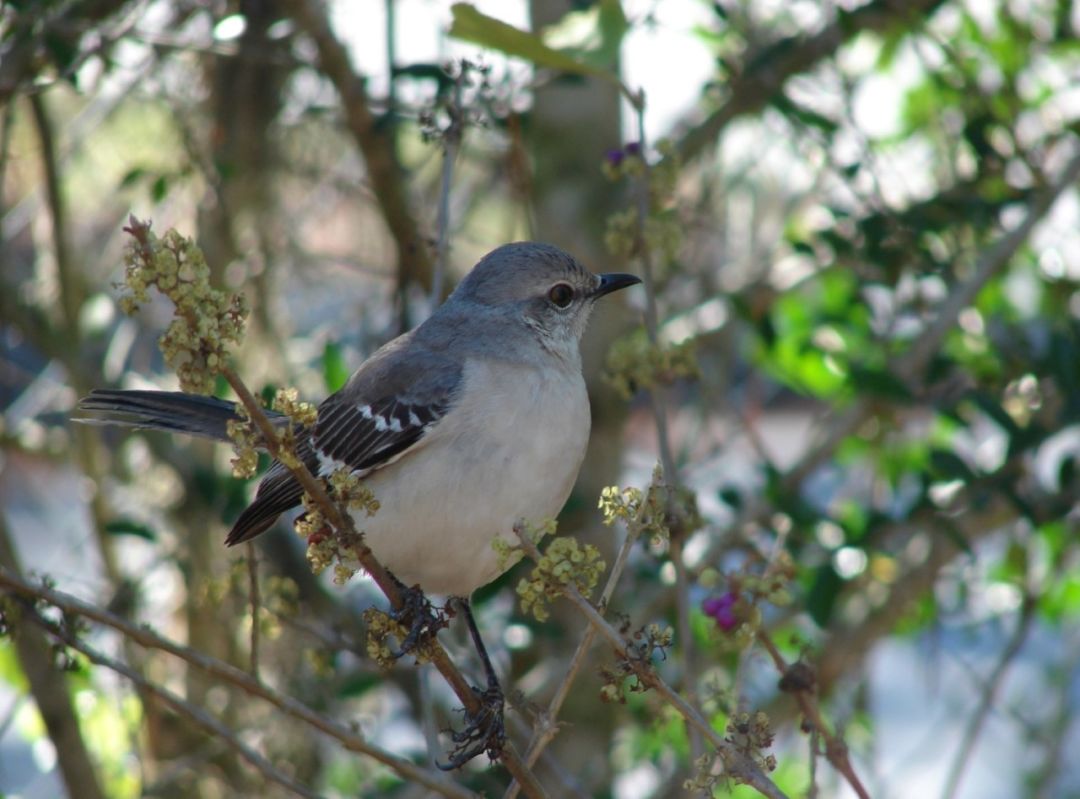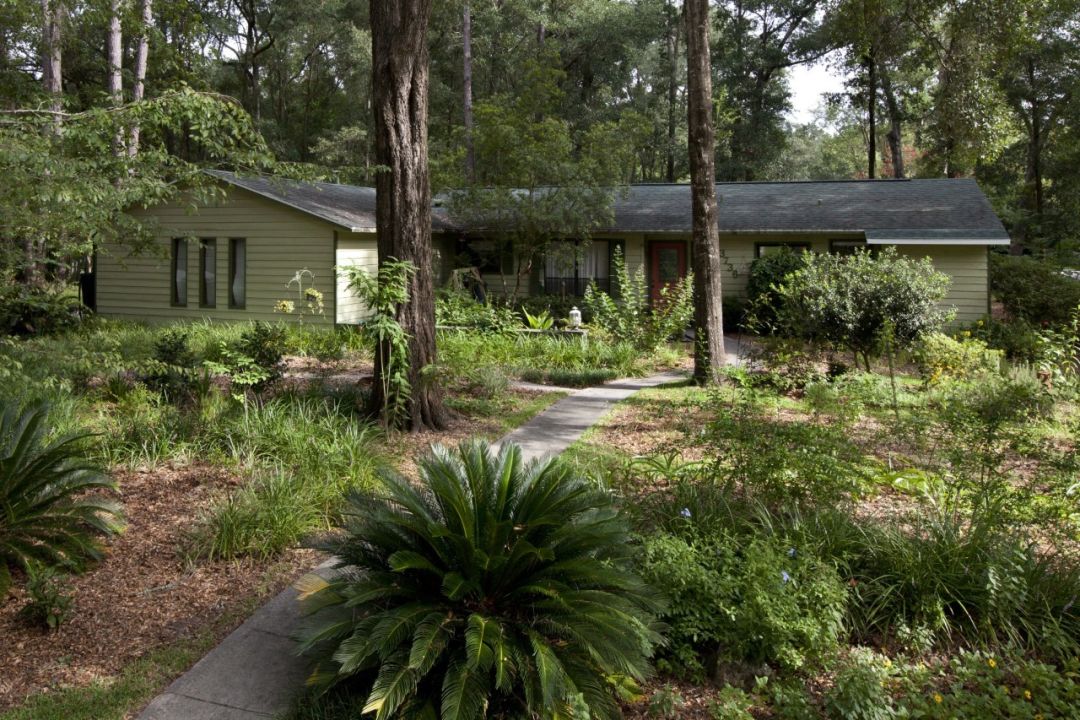Nine Ways to 'Birdscape' Your Yard

The American Mockingbird
Image: Wilma Holley
If you want more feathered friends to come to your lawn, you may want to consider "birdscaping" your yard. Birdscaping is the intentional effort to choose certain native plants, or even install unique features in your yard, in an effort to attract birds and other wildlife.
But if you're on the quest to construct your own backyard aviary, there are certain do's and dont's that should be taken into account. Wildlife expert Dr. Katherine Clements, the ecology and natural resources educator at the University of Florida/IFAS Extension Sarasota County, filled us in on what changes we can make to our yards to encourage birds to move in.

A Florida Friendly Yard in NW Gainesville, Florida
Image: Tyler Jones
Limit the amount of lawn you have
Limit the amount of lawn or turf grass as birds often don't feel safe out in the open in short grass.
Increase vertical layering
You don’t want everything on your lawn to be on one level. Try and include different layers of flowering plants, shrubs and trees. This provides a diversity of food sources for the bird, but also, birds prefer to be in that transition zone. They don’t like to be out in the open or in tall trees that could house predators. The transition bushes offer great spots for nesting, food and hiding.
Leave some debris
Try not to remove every dead tree or brush pile from your yard. Some communities won't allow this, but if you live in a more natural area, these dead trees provide insects and homes for woodpeckers and smaller birds like wrens that like living in brush piles.
Provide water
Water is crucial for all living things, birds included. You could put in a pond or fountain, but man-made bird baths are also a good option. Just make sure you are changing the water frequently.
Plant native vegetation
Birds that inhabit our local areas have evolved along with the native plants that grow here. The more diversity in your yard, the better the yard becomes for birds and wildlife. Choose to plant native plants that belong in Florida and aren't invasive—in other words, spread rapidly and take over native species. Some trees like the carrotwood and the Brazilian pepper tree, should be removed if found in your yard.
Provide birdhouses
Certain species, like barn owls, wood ducks and purple martins like birdhouses. Now, these houses are not the kind you could just pick up from a home-supply store; they have more specific requirements. For instance, some owls will nest in a house if it has a certain sized entrance hole and is placed at a correct height. These birds are known as cavity nesters.
Manage pets
Specifically, keep cats inside as much as possible. In the U.S. alone outdoor cats kill 2.4 billion birds annually.
Reduce pesticide use
Lots of birds don’t want to just eat berries, they want to eat insects, as well. Lay off the pesticide and let the native birds and bats act as free exterminators when they eat your bugs.
Expand the scale of habitat
Start by improving your own backyard, but then get your neighbors or HOA involved. This helps create "wildlife corridors," a continuous habitat that goes from lawn to lawn in a neighborhood. Wildlife corridors are especially important for migratory birds who prefer to live deep in the forest, but during their journeys need a place to stop for a meal and a nap. In a way, your neighborhood can create a "bird rest stop" or "bird hotel."



